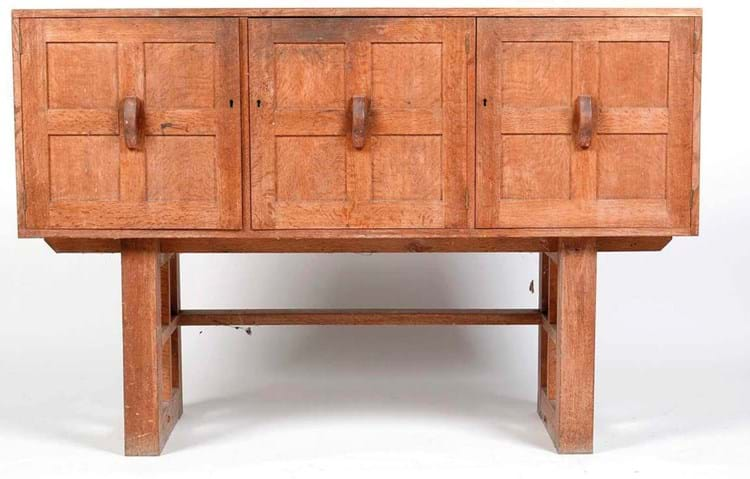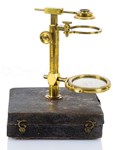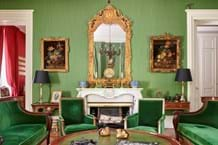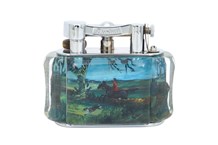As the miners and their families faced great hardship, a group of local landowners embarked on well-meaning schemes to feed mouths and teach new skills.
‘Major Jim’ and ‘Red Ruth’ Pennyman, owners of Ormesby Hall sited in the heart of industrial Middlesbrough, were among them. They provided land for growing crops and raising livestock and started a workshop to teach the miners carpentry and other crafts. The simple Deco-style domestic furniture they made, known as Boosbeck Industry Furniture, was sold locally from a showroom provided by the Pennymans in nearby North Ormesby.

Boosbeck logo.
The scheme, designed to put food on the table at the time of the Great Depression, is covered in some detail at Ormesby Hall, which came into the possession of the National Trust in the 1960s. An archaeological dig by Durham University in 2018 at the nearby site known to locals since the 1930s as Heartbreak Hill unearthed many artefacts now on display, while the Boosbeck furniture showroom is replicated in the house and a bedroom decked out with original furniture.
Boosbeck furniture is seldom seen at auction. The Price Guide database on thesaleroom.com lists just one: the oak and plywood sideboard offered as part of the sale of Modern Art & Design at Anderson & Garland in Newcastle upon Tyne on October 13.
Fashioned in the ‘Cotswolds’ style with three fitted panel doors raised on block style supports, it was branded inside with a circular BI logo. It came for sale from an outbuilding in Alnwick and was sold by a descendant of the Pennyman family. It was thought to have been bought from the workshop in the 1930s by Jim Pennyman’s cousin – a story that tallies with the understanding that Boosbeck furniture was never a bestseller.
“Apparently at the time it had proved difficult to sell”, says Anderson & Garland chairman Julian Thomson. “It seems the Perrymans had often gone cap in hand to friends and family encouraging them to purchase what the general public hadn’t really wanted to buy.”
Clearly a piece of considerable local significance, but one in rather tired condition, it was estimated at £50-150 but sold at £1700 (plus 25% buyer’s premium) to a North Yorkshire private buyer.















